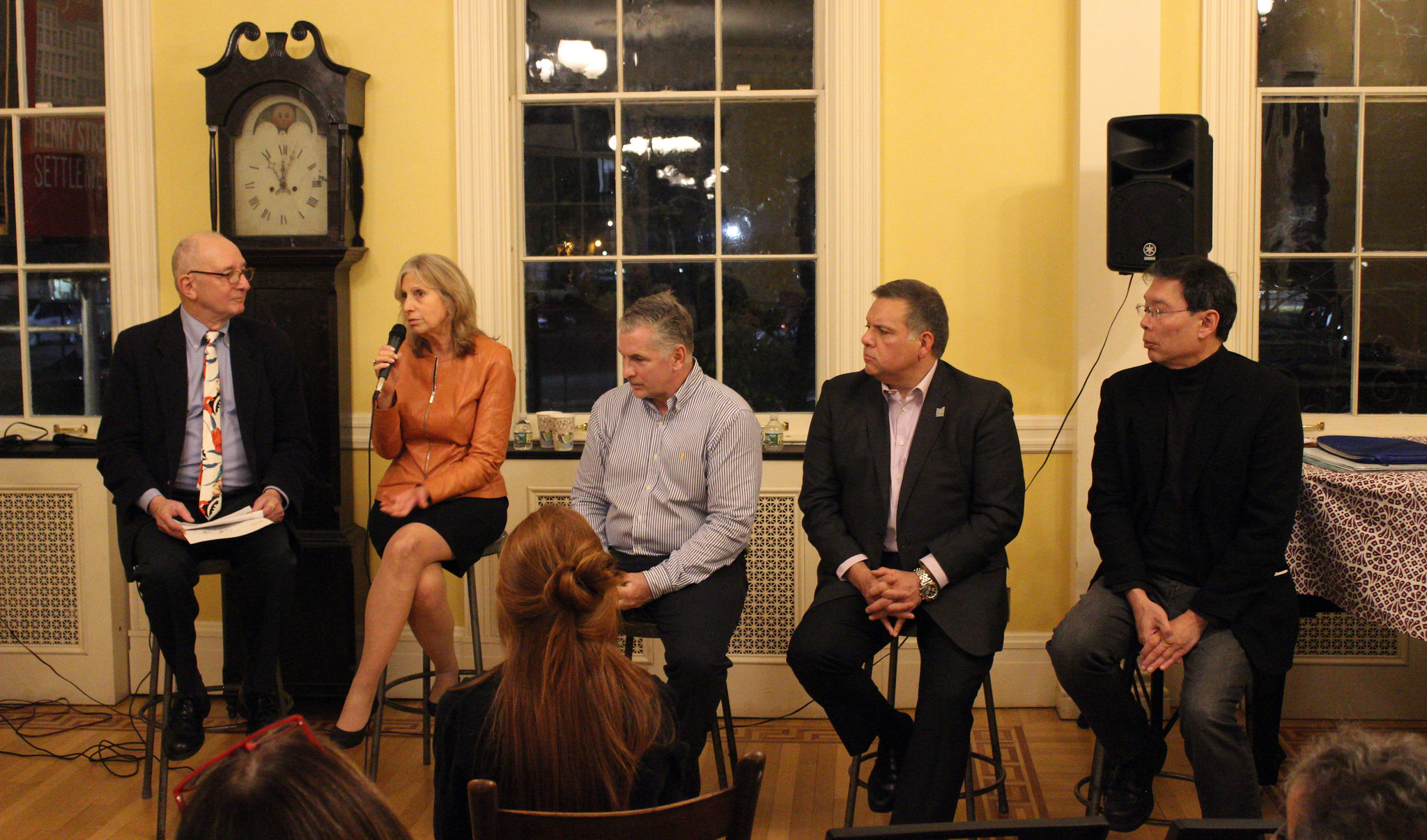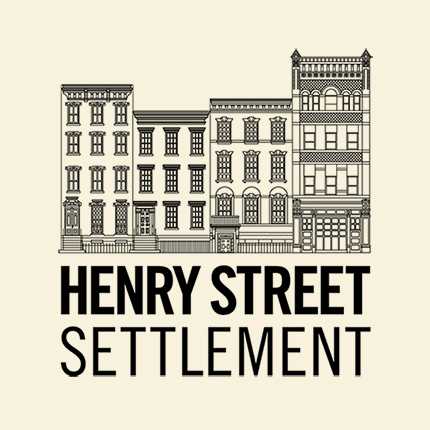More than Dust and Speculation: Why Nonprofit History Matters
By Chelsea Jupin

Above, left to right: Michael Seltzer, Louise Mirrer, Kevin Jennings, David Garza and Jack (John Kuo Wei) Tchen
History lovers and passionate nonprofit organization supporters gathered at Henry Street Settlement on Wednesday, November 28, to address “Why Nonprofits’ History Matters.” The event—presented in partnership with Baruch College Marxe School of Public and International Affairs Center for Nonprofit Strategy and Management and the Tenement Museum—brought together a panel of leading thinkers on the subject. Henry Street Public Historian Katie Vogel, Baruch College Dean David Birdsell, and moderator Michael Seltzer, kicked off the event in the Settlement’s historic dining room.
Louise Mirrer, president and CEO of the New-York Historical Society credited the 11 men who in 1804 recognized the historical post-Revolutionary War moment in which they lived and knew that if no one preserved it, history would be nothing but “dust and speculation.” Thanks to them, the society, New York’s first cultural institution, has millions of items that tell the history not only of New York but of the nation.
Michael Seltzer introduced Jack (John Kuo Wei) Tchen, Rutgers University historian, as the guiding intellectual force behind the creation of what is now the Museum of Chinese in America. Tchen, the son of refugees from China, says he grew up in a strange world, full of stories about China. In 1975, when he moved to New York from the midwest, new historians—Latino, women, Asian—were just beginning to tell their stories. In exploring Chinatown he found Chinese laundry lists and menus—untethered to their stories—which became the first among 65,000 artifacts in the museum today.
David Garza, executive director of Henry Street Settlement, discussed the agency’s renewed focus on its history leading up to its 125th anniversary and its tremendous sense of responsibility to preserve the principles that guide the Settlement’s work. “We’re founded on the premise of neighbor helping neighbor,” he said. “The Settlement blueprint informs our work.”
The Settlement received a major grant in 2017 from the National Endowment for Humanities to create its new, permanent exhibition, The House on Henry Street, which tells the story of the Settlement and Lower East Side from the perspective of the Progressive Era reformers who fought for better conditions in the home, school, and workplace. The exhibit was spearheaded Susan LaRosa, a historian and the Settlement’s former deputy officer of marketing and communications. In championing the exhibit LaRosa cited historian Daniel Boorstin, who said: “Trying to plan for the future without knowing the past is like trying to plant cut flowers.”
The exhibit, said Garza, has given the team a sense of belonging and of being part of history. “Those who explore their history are fortunate enough to benefit from the knowledge and power it brings,” he said.
Panelists saw nonprofit history as a chance to tell stories that would otherwise be ignored or forgotten. Kevin Jennings, president of the Tenement Museum, mentioned the fragmentation of New York City’s history as told through the city’s monuments, primarily of white men—and new efforts to tell the full story. “What stories we choose to remember and tell are usually of the powerful,” he said, adding, “Nonprofit history isn’t always remembered because their people are not valued. It’s the story of people fighting against power and injustice.”
The Tenement Museum founders wanted to remember the lives of ordinary people and give them the importance of presidents and mayors. It’s efforts, said Jennings, have led to global awareness of these unsung people.
Louise Mirrer discussed New-York Historical Society’s recent move toward telling these stories in recent exhibitions such as Slavery in New York. Tchen started the Museum of Chinese in America to do the same in a time where Asian-American stories were not included in American history museums.
One audience member stressed the need for all panelists and their organizations to work with the city’s Landmarks Preservation Committee to preserve the living history of their neighborhoods. Both Jennings and Garza confirmed that their organizations work with the city to help preserve the Lower East Side, with Garza stressing the duty not only to preserve the neighborhood but to protect its residents—Henry Street clients—from the problems that may come with development.
A final question addressed nonprofit histories and their relevance to current events, such as the debate around immigration. Jennings mentioned it was his dream to have every member of Congress and the president visit the Tenement Museum. Mirrer shared New-York Historical Society’s Citizenship Project, which helps immigrants in the New York region become American citizens through free educational programming. “Our institutions can be powerful,” she said. “We’re not going to solve all the problems, but there are ways of participating and giving history an agency that we may have not thought of before.”
